Emotional stress can show up physically in the body and impair our ability to heal. So, I invited today’s guest on to talk about ways to release tension.
Dr. Tara Rasta received her BS in Neuroscience and Psychobiology from UCLA and then went on to get her doctoral degree in chiropractic from Southern California University of Health Science. She takes the whole person into account by addressing the physical, mental, spiritual and social spheres of life. From healing waves and personalized meal plans to group sessions, her comprehensive approach to health creates a culture of healing and support for everyone.
In today’s podcast we cover specific techniques with breathwork, movement and body work that help release both emotional and physical stress to help open your opportunities for healing and optimal health.
To learn more about Dr. Tara Rasta:
https://www.instagram.com/tararasta/
Transcript for Releasing Tension
Dr. Cates: Hi there. I’m Dr. Trevor Cates. Welcome to The Spa Dr. Podcast. Emotional stress can show up physically in the body and impair our ability to heal. So I invited today’s guest on today to talk about ways to help you release tension. Dr. Tara Rasta received her Bachelor of Science and Neuroscience and Psychobiology from UCLA and then went on to get her doctoral degree in chiropractic from Southern California University of Health Science. She takes the whole person into account by addressing the physical, mental, spiritual, and social spheres of life from healing waves and personalized meal plans to group sessions. Her comprehensive approach to healthcare treats a culture of healing and support for everyone. In today’s podcast, we cover specific techniques with breathwork, movement and body work that help release both emotional and physical stress to help you open up opportunities for healing and optimal health. So please enjoy this interview.
Dr. Cates: Dr. Tara its great to have you on the podcast. Welcome.
Dr. Rasta: Thank you so much. I’m glad to be here.
Dr. Cates: So we’re talking today about how emotional tension shows up physically in the body, and especially this time of year during the holidays, who doesn’t have a little bit of extra stress, right? But it really can impact our ability, our body’s ability to heal. And that trauma can get really locked in our bodies, right?
Dr. Rasta: That’s true. So anytime we perceive something as trauma, depending on how bad the trauma is, it gets locked into different parts of my body, our muscles, just like our brain, they have memory. They remember things that happen around us. So one of the things that happens is that when we perceive something as trauma, that frequency and that vibration of the trauma gets locked in and it creates holding patterns where people usually become forward shoulder they tuck in their heart, their spine becomes more rounded and it results of that impacts your whole spinal cord, because your spinal cord has all these nerves that go through to tell the organs what to do. So when you have that impact in the spinal cord and that tension and that holding pattern, it’s going to impact the way the brain and the spinal cord communicates with the organs in the body.
Dr. Cates: Yeah. And so if we don’t take care of this kind of thing, what, what are some of the health issues that you see with people?
Dr. Rasta: One of the most common health issues that I see with a woman is thyroid issues. I would say that anytime that I have a woman come in in my office about nine out of 10 or nine out of 15 of those people have thyroid issues, they often had a high hyperthyroidism. So it starts with hyperthyroidism and then they’d go into hypothyroidism. And most of the time when you check antibodies, they have Hashimoto, where there antibodies of the thyroid is really high. I would say that most of these people have a really good chance of healing their thyroid disease through the work that I do because we take the body from the state of fight on flights. The state office really stressed, interested deep healing in parasympathetic you already know, the state of sympathetic truly takes away from the energy of our body. It takes a new almost healing because all the blood goes into your muscles in case you need to fight somebody or runaway. We give opportunity people who come into the office so they can sit and they can have greater self awareness. They complete deeper into the different areas of the body. I do some sound therapy, just anything that’s going to help their body go from this state of sympathetic to parasympathetic and wrestling to digest. And when we do check their blood work, we can see that so many different physiology and so many of their chemistry completely changes because the body just knows how to heal itself. Once that organizing intelligence activate it, do that rest and digest, they’re able to heal so many different issues.
Dr. Cates: Yeah. Well and it’s interesting, you know, it’s, it’s hard to know with like something like hypothyroidism. It’s hard to know like what, what was the original cause for that. But certainly it seems like when you have that tension in the body, it until you release that that is a limiting factor. I know as a naturopathic doctor, I’m always talking about what are the root causes behind health issues, how do we remove all the obstacles to healing and a lot of times we forget to talk about physical tension in the body and how movement and freeing up the body to move helps with the healing process.
Dr. Rasta: Absolutely. I think it’s a big issue. One of the things that I do, I have a thermal scan where you run it through the spine and you can see which nerves are not communicating which organs. One of the things that shows up as a nerve that goes to the thyroid gland, most of the time people who have thyroid issues are not activated. They’re not able to communicate properly. So as you can see, their spine is one of the issues creating the thyroid issue. I think around thyroid issues and autoimmune issues there are so many different factors because we are not, you know, are not a machine we are an organism and different things impact us. Our emotions impact us. The air we breath impact us, the water we drink impacts us, the food we eat impacts us. It’s not just one thing, but I really do believe that our stress levels, the way we hold our body a self awareness of our body has a huge impact in healing.
Dr. Rasta: And I would say that’s the first place that I would go and I wants to help somebody to heal their issues is that how can we get you into a state of deep healing? How can we get you so that you have greater self awareness so that you know when it is time to stop because your body is constantly trying to communicate with you. When you eat a food that your body doesn’t like, you get, you have burping or you get GERD or you have some acid drifts. Your body’s telling you, I don’t like this food don’t eat this food. And yet because we’re in this constant state of go, go, go. You forget to actually pay attention to these internal signaling and messaging, doing techniques that allows you to breath into your spine by doing techniques that gives you at least an hour in a week for you to just talk into your body, tap into the resourcefulness of your body, and you’re able to have a greater awareness of your body. And that awareness, it’s going to change the way you live your life and as a result, we are going to become healthy. Because I always tell my patients, don’t own your disease own the action that’s going to bring up peace, own the action that’s going to create even the story that, oh I have this disease I can’t do anything just in itself, it takes people away from healing their bodies.
Dr. Cates: Yeah, it is so important. We oftentimes forget of the importance of the parasympathetic nervous system in that rest or digest phase. And that we’re constantly on the go more constantly stressed that our body doesn’t have that time to restore and actually digest our food. And even just at meal time, not think about how often and are those are your listening, I think about how often you grab things on the go and you don’t take time to breathe and relax before and during and right after a meal. And when with that, when we are constantly on the go and eating and or eat and run, then we don’t give our bodies that time to truly digest. And when we don’t do that we can’t digest our food, we can’t absorb the nutrients and that has a whole cascade effect on our health. And so what you’re talking about is finding that time for that parasympathetic state to take over. And so one of the things you mentioned was, was breathwork, right? So et’s talk about the healing powers of just breath work.
Dr. Rasta: Yes, there is. I do retreats and throughout this retreats I take people through what I call stages of healing or stages of consciousness. And the stages of consciousness, they have different types of breath work to acknowledge the different feelings that you feel, strong feelings. So for example, one of them is suffering and one of them is just going into different areas of the body and just tapping into a part of your suffering.
Dr. Rasta: Is there a part of me that needs to be acknowledged? For the fact that there was a part of me that’s grieving or a part of me that’s sad because through acknowledgement we can really shift those emotions. Another breathwork is going into different parts of your body. One is your belly and one is your chest and tapping in and seeing what are, how are the rhythms difference in my belly in comparison to my chest? I call that stage polarity. Being able to see my polarity because a lot of times if you’re not able to feel your own polarity it will project it out to other people in your life. And when you’re able to see your own polarity it creates grater compassion, when you see someone’s else’s polarity, because at the end of the day, we want to come to a neutral place.
Dr. Rasta: So the breathwork not only allows you to tap into different parts of your body and connect with your breath, but also connect with different emotions and different consciousness of your body. I also use a lot throughout the breathwork. We use a lot of our voice because when, when you activate your voice, like when you sing or when you just say, ah, you know, throughout the breathwork it allows you to shut down your mind. But it also activates the vegus nerve. So the vegus nerve is a cranial nerve that goes from your brain all the way down it integrates all of your organs and it allows for the organs to go from that state of fight and flight to rest and digest. So another thing that we used about the breathwork is using your voice painting sounds. To one, activate the vegus nerve and other ones acknowledged yourself. Sometimes just hearing your own voice is really soothing.
Dr. Rasta: And sometimes I have people call their name out when they’re doing the breath work and apologizing to themselves for the parts of themselves they didn’t notice. There are parts of ourselves we don’t notice. Especially for you, you and I, being in the healing industry, we want to give so much more and looking at ourselves and acknowledging the parts of ourselves that are, that need more attention. So it’s really powerful. Sometimes people calling their own voice, their own name when they’re doing the breathwork for acknowledgements and for just creating this relationship back with ourselves because we have relationships with everybody else. For a lot of us, the relationship you have to be having that ourselves is kind of blocked. So there’s just different types of breathwork and different types of consciousness and different types of declarations and using your voice to acknowledge yourself.
Dr. Cates: I love that. That’s fantastic. I think that for some people it might be a little hard to do that initially. Have you found for some people it’s challenging to use their name or to acknowledge themselves cause, yeah, I feel like some people might have a block from that. Is that true?
Dr. Rasta: Absolutely right. It’s a process so, when somebody first come in. I don’t have them do all of that. It’s just about like, okay, like, and I say, what do you feel? Do you have more breath in this area? Do you have less breath in this areas is there area where you feel like there was greater connection into your body? Is there an area where you feel like it’s more tight? Well, we just start with simple things and they’re like, oh, I feel less tight, more tight here and less breath here. And then we’re like, okay, well let’s build a bridge lets see if we can shift this part that feels really tight. So we just start with really small things for them to just be aware of their body and as they go through care, we get them into a state that’s deeper and deeper where they can acknowledge different parts because it’s really important to build a trust with the relationship like so that the person trusts you and they can feel that they can express themselves and show their vulnerable parts and be vulnerable, so you’re absolutely right. It does take time for some people they don’t even, their breath is so shallow that all I have to is to just give them to get their breath a little deeper. So it just really depends on where the individual is at an understanding that there’s different timing for people and it’s really important to respect that timing.
Dr. Cates: Yeah, that is really important. I think it’s, and working with someone like, like you’re talking about working with their practitioner, you feel safe with that you can trust, so you can open up to and allow some of this work to unfold I think as a great, you know, finding that right person that you connect with is key. And that you feel safe with that you can be vulnerable and open up and hopefully then that allows you for sometimes people don’t even trust themselves. And then you know you get that trust factor involved and that can really help open up some opportunities for healing and I love this aspect cause this, ties into a lot of what I’m encouraging people to do more self care and because I think a lot of time we’re taking care of other people and especially women, we tend to take care of our children and maybe even parents or clients, patients, other people around us and we forget to take care of ourselves and if we don’t fully embrace that time for self care and then it, then we get burned out so much easier and it can lead to some of some health issues down the road or worsening of current health issues. You find that to be true, too?
Dr. Rasta: Absolutely. Especially for a woman. This is just my personal opinion and it’s not from research, but I really do think as a woman we’re not supposed to work as many hours as men and it’s important acknowledge that. I know we’re in a society, we’re in a modern society we want to be equal and I totally agree with that, but it’s also important to know that we bleed every month for seven days. It’s important to acknowledge that that takes a lot of. It’s a great process because I think it’s an amazing detox process, but to also considered that we are not the same, we are supposed to take more time to rest and we are suppose to take care of ourselves a little bit more because we lose all of that iron and all of that blood.
Dr. Rasta: So, and then you go through phase of menopause, when your hormones and your estrogen levels drop and your body has to take some time to adapt to itself. So it’s really that self care is really, really important, especially for a woman. It’s important that we have rituals as well. Like a ritual for the morning when you get up, even if it’s just 10, 15 minutes to allow your body to calm down from the cortisol that hits us all of a sudden in the morning and you’re just in this phase of go, go, go, just calm down doing a 10 minute meditation. You know, and the meditation, by the way, you don’t have to be seated. Do something that works for you, if it works for you for to lay down, standing up. Do that first. You know, whatever works for you. If it’s just, you know, drinking your tea in a garden, just grounding earth and putting your feet down on earth, letting that iron come through and just calming your nervous system is really important. And also when it comes to doing your menstrual cycle, giving yourself a little bit more time, a little bit more time to rest, and allow your system to reset so that you can start your week or once your menstrual cycle ends, you can have more energy in your body for your life.
Dr. Cates: I love that. And you know, it’s funny cause my first reaction, I’m just going to be totally honest here, when you first, my first reaction to you saying women need more time to rest than men. I was like, ah, I don’t need more time than men to rest. But when you explain it like that, I think I get what you’re saying, um, is that women as women during, especially during these phases of the month and these phases of our lives, that there are times when, and if, you know, if the word rest doesn’t resonate with people, then it’s like that time to go inward almost. Or that time to restore from the inside out and to allow ourselves the time to do that because we need that during these, these times of change, right?
Dr. Rasta: Yeah, absolutely. And if you even look at the hormone patterns of men and women, it’s very different. So it’s important to acknowledge those biorhythms that we have also. Do you have kids?
Dr. Cates: Yes, I do. I have three.
Dr. Rasta: So I don’t have any kids, but I think that even the process of birthing takes a lot out of a woman’s body. So that I get, it’s important that the woman rests after they have children. Or just to acknowledge that, hey, I went through a process of birthing three children. So then, and I do deserve to give myself the permission to rest a little bit, to take more time to go inward. And I know in our modern society we just want to go, go, go. But it’s important to acknowledge the biorhythms we have within. Because our cycles, our hormones are completely different. Men, they can work for 14-15 hours, this is actually has been researched, for a woman it’s very difficult on your body because when you work and when you’re constantly in a sympathetic, you’re producing more testosterone and that’s not natural for our body.
Dr. Rasta: So it’s important to acknowledge those biorhythms and everybody’s a little bit different. Some women, they can keep going and they’re, they’re good. For some others, they need to rest a little bit more. Maybe because they have a heavier menstrual cycle. So I’m just saying that it’s important to acknowledge those parts, that we are supposed to be more gentle. Because our feminine nature deserves that and we should give ourselves permission to do so.
Dr. Cates: Right. And having that permission to have time for self care like you’re talking about I think is so key. And sometimes it can be challenging to find the time, especially when you know you’re talking about people that have children and often times if you have children, it’s harder to find that time but you really even more so need to find that time. And so I oftentimes, for me personally, I find that early mornings or later in the evenings are good times for finding that time and depending upon what I have time for, whether that’s morning or night, that will vary the type of self care activity that I do. It’s like in the morning you’re trying to, you know, get going so you could do more energizing activities and exercise and the evenings, it’s more, that’s a better time for reflection and calming down bedtime rituals, those sorts of things for self care. But you know cause I know that often has people that have children be like, how does she know she doesn’t have children? But it is true that we have to find that time and we’re just better able to do all the things that we want to do in our lives. And so I love that. And so you know, movement is also so important and breathing, breath work brings in movement of our spine and our bodies. But what are you, you mentioned to me before we got started like talking about the power of yoga and stretching.
Dr. Rasta: Yeah. It’s really amazing what a 10 minute yoga can do for you and how energizing it is when you’re just moving your spine. In my practice, I use a specific technique as I was telling you earlier. It’s called network spinal. We’re reactivating the spine. We’re helping the spine to create movement and self adjustments, but I think integrated in different practices that involves the flexibility, creating different flexibility in our spines is so important for our health and for our energy. I mean 10 minutes of yoga, just allowing your spine to go into a movement of extension. It’s extremely energizing, and just allowing our spine to have these different movements. Our spine was meant to move, belly dancing, zumba, hip hop dancing, and just allowing the movements of music, the rhythm of music help us move our body, help us move our spine. It’s extremely, extremely important for health.
Dr. Rasta: I cannot emphasize it enough. So I was working at an office where I was only allowed to do functional medicine, so I was only, you know, it was checking people’s blood work. I would give them a diet based on their DNA or based on their food and they would get a little better. It would get better. Some of them they didn’t change and I’m like thinking what’s going on? Like why is it not working? And then I had another group where they were getting their spine checked and they were receiving functional medicine and every single one of them, they did so much better. And I think that giving the time to the body to just reset, getting the time for the breath to go through each vertebrae because our lungs, they go all the way down to our back in our, in our back.
Dr. Rasta: So we’re not using that entire capacity of breath. Most of us are not. So just retraining the body to be able to take that deep of a breath and having a deep exhale and being able to move the breath through each vertebrae and instead of stretching, actually having our breath to stretch, our tissue. It’s very empowering because it allows you to go into a really state of deep healing, deep relaxation, and just exploring how much breath you can take in as time goes by. Because most of us are shallow breathers and just knowing that you can actually inhale for a minute, like how I breath. Sometimes when I’m going to that space where I’m breathing, I can inhale for a minute and that’s something that developed over time. It didn’t happen overnight because that was a very shallow breather just like everybody else. But that breath can completely change your perspective.
Dr. Rasta: When something stressful happens, your body just automatically just goes into that state of breath. When you’re driving and somebody cuts you off, you can just go into that state. So I think breath and movement and getting the time to our spine to just go into different movements. Just maybe tuning in and seeing what feels good today. You know, just doing intuitive yoga, just seeing like what it’s going to be extremely empowering because it allows you to connect with the resourcefulness that is right inside of you, that intelligence that is right inside of you.
Dr. Cates: Yeah. And I think when we talk about shallow versus deep breathing, how does someone know that they are a shallow breather? And I mean, obviously seeing you, they would, you would be able to tell them that by, by watching and listening to them breathe. But you mentioned an inhale of a minute long. And I, I mean that is that, I mean, if people might not realize, but if you, you know, listeners, if you take, set your timer for a minute and try to inhale for the entire minute without exhaling, that’s a long time. So, but there’s somewhere in between that that’s still going to be healthy for people. How do they know if they’re a shallow breather and how can they, how can they improve that?
Dr. Rasta: The best way is to put your hands on your body and especially in different places. So you would start with your belly and to see how far how big you can make your belly. So how can you stretch your tissue a little bit more? And that’s how you, you know, practice to get it deeper and deeper. And I just go for a minute. You know, everybody should find their own rhythm. Everybody’s different. So that’s one of the ways. And just actually breathing in through your belly, where your ribs come together, your solar plexus and your heart. And just pay attention and seeing where do you have greater breath. Where’s your tissue being stretched more where it being stretched less than going into the area that is tighter to bring more breath in and it just, you know, it’s just you’ll see that if you do this for a week and you just do it for five minutes a day, you will for sure notice, that it’s going to be a change and your breath is going to get deeper and deeper. And it’s really calming, there is something really powerful about you touching your body and just being in tuned to how much you are stretching. When you breathe in, you’re stretching your entire connective tissue of your body. It’s really powerful to just watch that and just to see that, wow, you know, my tightness in my neck and my shoulder could simply go away by just doing deep breathing.
Dr. Cates: Yeah. And so, you know, usually people can tell if they’re shallow breathing if they kind of touch to tune in with themselves and their breathing, we can be aware of that. And just being aware of it, I think is a big, a big opportunity to shift that type of breathing and then having that, those longer, deeper breaths. Part of that is a physiologic thing that takes training your body and adjusting to going from breathing a shallow up in your chest to those deep breathing techniques. Right?
Dr. Rasta: Yeah. So you can also just see which one group gives you more breath. So you can do in your nose after your mouth. You can do it in your nose, out your nose. You can do in your mouth out your nose or you can do it in your mouth to out your mouth. So you can do different types just to see which one feels better for my body and which one gives me a deeper breath. And there’s all these different ways can really stimulate the nervous system it can really stimulate the body. So if you want to do, if you’re in the morning, if you would want to get more energized, you would do it in your nose out your nose, if you want it to calm down, you would do it in your nose out your mouth. So there’s different ways of doing it as well for more energy or just more relaxation.
Dr. Cates: Yeah, it’s so amazing. There’s different ways to breathe that impact our, our sympathetic, parasympathetic, that balance. It’s pretty interesting to learn about that. So now in your practice you have experience working with people. So there are a lot of things we talked about today, breathwork, movement, stretching, yoga and then, you know, mindfulness of being aware of saying your name. I love that one. And say their name as you breathe. And there’s a lot of that we can do ourselves, but some people need a little extra support. So that’s what you do and your, and your practice, right? You help people. There’s a technique that you use.
Dr. Rasta: Yeah, there’s a technique that I use is called network spinal analysis. You guys can look it up on YouTube and you can just read a little bit about it. It’s very different than most chiropractic techniques. I don’t do any adjustments because what I see is that once that breath is activated, once the spine is activated, people have urges of wanting to self adjust. So a lot of times their spine actually gets adjusted without me doing anything because that is the power of the intelligence of the body. And this paradigm is a little bit different because we think about it as reorganization of healing, so, and it’s about creating instability in the body through the breath through the movement and that instability creates a reorganization into a higher state of function. So it’s a little bit of a different perspective into healing, but it’s also really important that we time it properly for each patient. So it’s really important that I knowledge that the person was coming through my office, maybe they’re not ready for all of that movement. So we’ll just start with a little bit of breath.
Dr. Rasta: Maybe somebody else comes in that the really movement for big move and so then we give them more. It’s really about creating a space where they are fully loved, they are fully supported and they feel that they can express themselves. The work is also done in groups, which I think is extremely powerful. So I see four or five people at the same time and there is something really powerful about hearing somebody else breath right? It makes everybody else to want to tune into their body. So it’s really, it’s really interesting. Those narrow of our brain actually look at other people and they learn okay, this is time for me to relax, tap it into my body and allow my body to just going into that state of rest and digest. So I constantly check my patient through different technology, heart rate variability, electromyography and I can see that the holding pattern is changing, their posture is changing. Through something rather simple through being able to breath into different parts of their spine and allowing their body to make the movements that are like urges instead of me telling them what to do. They just are just a created through this work. So it’s really fascinating to watch it and it’s really fascinating to look at their blood work and see the physiology change because their spine is changing.
Dr. Cates: Interesting. Very interesting. So I really appreciate you sharing all this information and sharing what people can do on their own and additional support that people can get where can people learn more about the work that you do?
Dr. Rasta: They can go on my website drtararasta.com it’s drtararasta. Also would love anybody to call me. It’s free consultation. I’m just, if I can’t help you, I would love to refer you out to somebody that I know or you can just come to my office and get some tea with me. It’s called tea time with Dr. Tara. And I can just, you know, look and see how it is that I can support you. Because at the end of the day, my mission is to help people bring out their gifts. And Trevor, I think that one of the limiting factors for healing is when people are not sharing your gifts. I think for you, doing these podcasts is part of your gift. So it gives you a lot of energy maybe when you do these podcasts. And I think for everybody else to figure out what your passion is, and letting that passion, that fire to just burn inside of you so that it can take away the chilling effects of doubts and uncertainty and failure is so important for healing. So I think my last message is, please empower yourself by finding what is your dream, what is your dream, what is your passion and live it because that in itself is extremely healing. And once you tap into that passion and your love for the dream that you have, you’re going to get better because that creates so much more energy inside of you for healing.
Dr. Cates: Great. Thank you so much. I love tea time with Tara that start Dr. Tara. That’s fantastic. I need to have tea time with Dr. Trevor. All right, thanks for coming on today. Again, thanks for all your great information. I appreciate it.
Dr. Rasta: Thank you so much Dr. Trevor. Have a wonderful day.
Dr. Cates: I hope you enjoyed this interview today with Dr. Tara. To learn more about her, you can go to thespadr.com, go to the podcast page with her interview and you’ll find all the information and links there. And while you’re there I invite you to join The Spa Dr. Community so you don’t miss any of our upcoming shows. And information and you can get your own customized skin report at theskinquiz.com. Find out what information your skin is trying to tell you about your health and what you could do about it. Just go to theskinquiz.com it’s a free online quiz. Also, I invite you to join me on social media. The Spa Dr. Is on Facebook, Instagram, Twitter, YouTube, and Pinterest. You could join the conversation there and I’ll see you next time on The Spa Dr. Podcast.
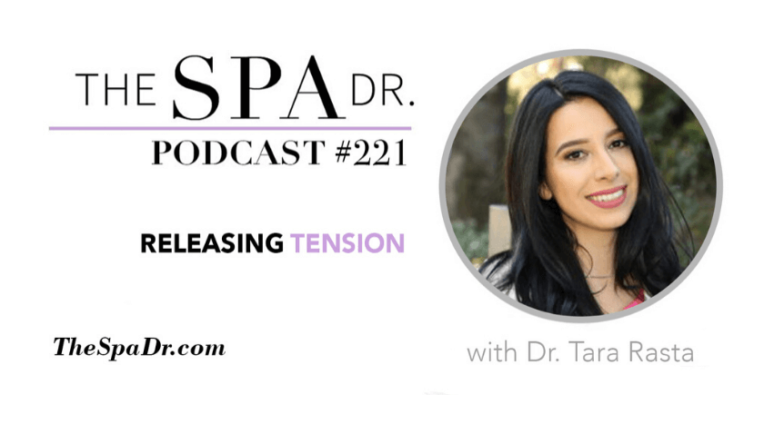
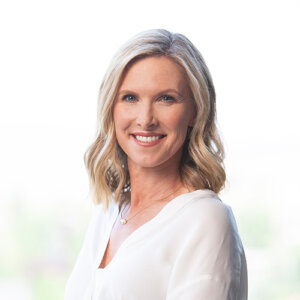
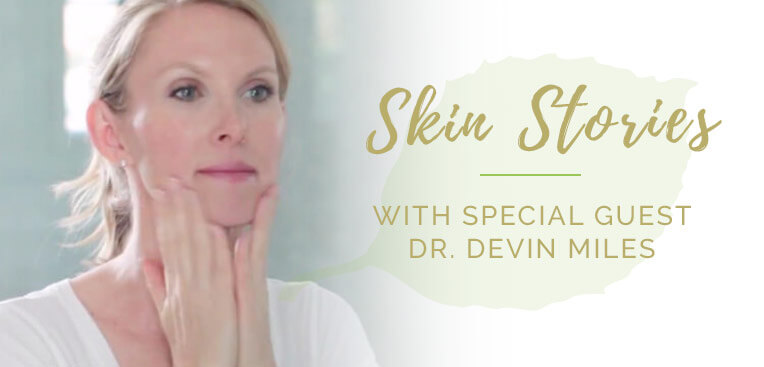
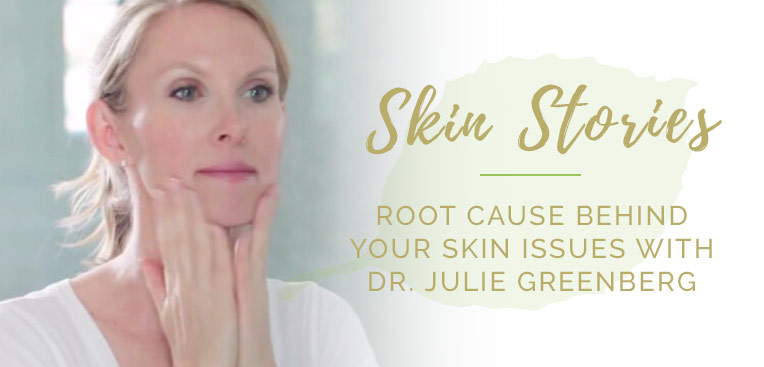
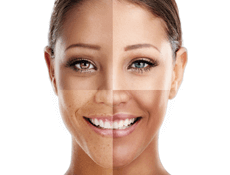

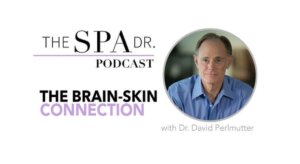

Reader Interactions